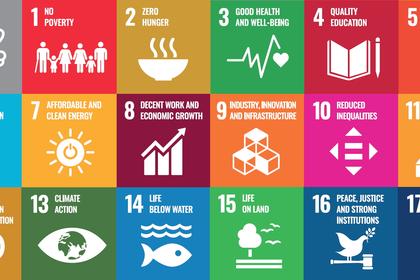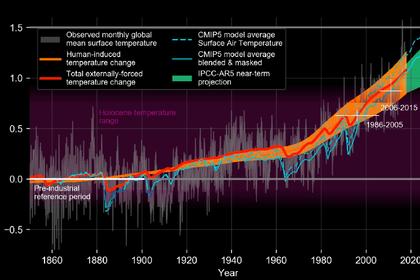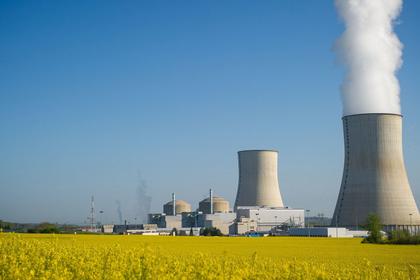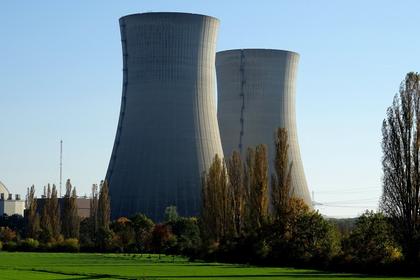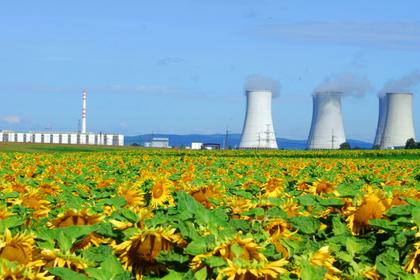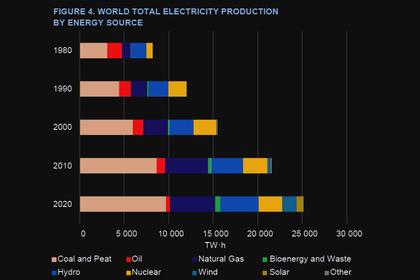
NUCLEAR IS A CLIMATE SOLUTION
IAEA - 29 October 2021 - Nuclear is, and will be, part of the solution if we are to achieve the goal of limiting global warming to below 2 degrees Celsius, said IAEA Director General Rafael Mariano Grossi, ahead of next week’s 26th Conference of the Parties to the United Nations Framework Convention on Climate Change (COP26). Mr Grossi will attend the COP, taking place in Glasgow, Scotland, from 31 October to 12 November, where he will meet with world leaders, and will host and participate in events and discussions surrounding nuclear solutions to help meet climate goals.
The annual COP brings together countries to negotiate and accelerate action towards the goals of the 2015 Paris Agreement – an agreement adopted by 196 countries aiming to limit global warming to below 2 degrees Celsius, preferably to 1.5 degree Celsius, compared to pre-industrial levels.
During this world forum, heads of state and government are expected to deliver plans to cut emissions, which could impact our everyday lives – from the vehicles we drive to how we heat our homes. The recent headlines stemming from the UN’s Climate Change and Emissions Gap reports, as well as the Greenhouse Gas Bulletin from the World Meteorological Organization, highlight the urgency for swift action to address climate change.
“Woods are burning, floods and hurricanes are multiplying, and temperatures are rising,” said Mr Grossi. “Now is the time for action, and this action must be based on science and on facts. According to the best science of our day, nuclear power is part of the solution.”
The IAEA recently released reports detailing the roles of nuclear science and technology in climate change adaptation and of nuclear power in achieving the goals of the Paris Agreement and Agenda 2030 for Sustainable Development. At COP26, the Agency will showcase the twofold role of nuclear: to help realize a net zero world and to help adapt the management of agricultural systems and natural resources to cope with challenges posed by climate change.
“Nuclear energy provides more than a quarter of the world’s clean power,” Mr Grossi said. “Over the last half century, it has avoided the release of more than 70 giga-tonnes of greenhouse gasses. Without nuclear power, many of the world’s biggest economies would lack their main source of clean electricity.”
“COP26 is a chance we cannot waste,” Mr Grossi continued. “It may be one of our last best opportunities to agree on concrete steps to achieve sustainable prosperity for all. In the face of climate change, we are all one nation.”
He highlighted some examples of how nuclear techniques are being applied to adapt to consequences of climate change, such as tracking and quantifying carbon, water and nutrient movement and by inducing variability in crops to make them tolerant to drought, salinity or pests.
The IAEA will host and participate in several events at COP26, to contribute to an informed debate on the benefits and role of nuclear power and applications helping to meet climate goals, including decarbonizing sectors, such as industry and transport, through the production of low-carbon hydrogen. Events will be livestreamed on the IAEA website.
An Action Hub event on Thursday, 4 November, #Atoms4Climate: From the Energy Crisis to Better Crops, How Can Nuclear Help Meet the Climate Challenges?, will see Mr Grossi discussing with Gillian Tett, author and Financial Times US editor-at-large, how the world can manage to overcome both the climate crisis and the energy supply crisis. They will debate whether evidence-based thinking or ideology will decide the energy mix of the future; whether nuclear energy is about to have its next renaissance; and how nuclear science helps communities adapt to the consequences of climate change.
Also on 4 November, at the event Nuclear Innovation for a Net Zero World, Mr Grossi and ministers, as well as industry leaders, will discuss the complementary role of nuclear power and renewables in the transition towards a carbon-neutral future. They will explore how international cooperation can help in the transition to net zero.
On Friday, 5 November, the role of youth in the net zero transition and the best ways to attract the young generation to nuclear science and technology will be addressed during the event Net Zero World: The Youth Perspective Today & The Future. The winner of the IAEA Net Zero Challenge will present her project, and Mr Grossi will also announce the IAEA Climate Internships.
A two-part event on Saturday, 6 November, Contribution of Nuclear Science and Technology to Climate Change Adaptation, will first focus on the role of nuclear science and technology in climate-smart agriculture and overall climate adaptation. The second part will present the Blue Carbon initiative and the IAEA’s work on ocean acidification.
On Tuesday, 9 November, the WMO will join the IAEA for Nuclear Sciences in Climate Studies: Fingerprinting Precipitation Origins Using Isotope Tracers. The event will highlight the precision techniques nuclear sciences offer to climate studies and will showcase the power of isotopes in evaluating the impact of climate change on water resources and water-related infrastructures.
The IAEA will also be participating in several events organized by others attending the COP, including an event by COP26 host, the United Kingdom – The Role of Nuclear Energy in a Net Zero Future. On Thursday, 4 November, 18:00 (UK time), Mr Grossi will join Fatih Birol, Executive Secretary of the International Energy Agency, and Greg Hands, UK Minister of State for Business, Energy and Clean Growth, to discuss the role of nuclear energy in transitioning to a diverse net zero energy mix that includes other low-carbon technologies like wind and solar.
The IAEA will join other UN organizations for side events on Tuesday, 9 November: Accelerating Implementation of SDG 7 and Ocean Action = Climate Action.
-----
Earlier:
